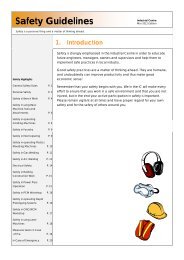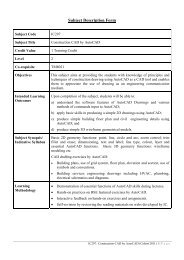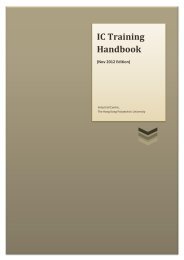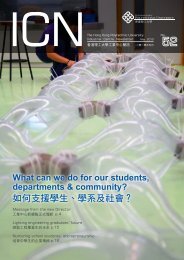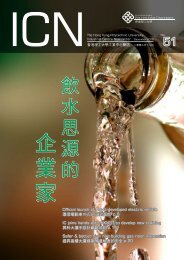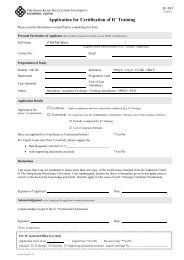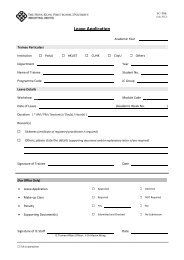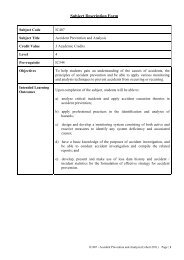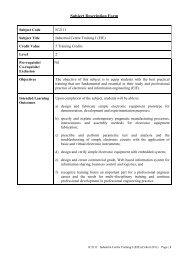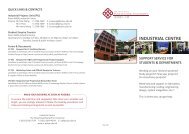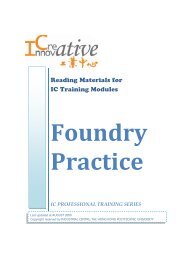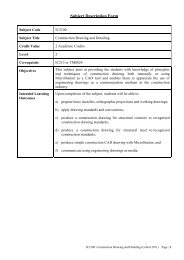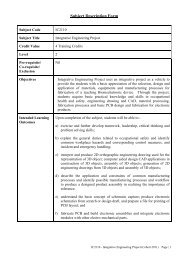Plastics Technology Practice - The Hong Kong Polytechnic University
Plastics Technology Practice - The Hong Kong Polytechnic University
Plastics Technology Practice - The Hong Kong Polytechnic University
You also want an ePaper? Increase the reach of your titles
YUMPU automatically turns print PDFs into web optimized ePapers that Google loves.
2.2 <strong>The</strong>rmosets<br />
<strong>The</strong>rmoset materials are heat-sensitive<br />
synthetic materials which, when subject to<br />
heat and usually pressure, will undergo<br />
chemical change with their molecules crosslinked<br />
together to become permanently<br />
insoluble and infusible. <strong>The</strong>rmosets cannot<br />
be remelted and reformed after cured and<br />
the process is irreversible. This reaction is<br />
somewhat like cooking an egg: once cooked, it is set permanently.<br />
<strong>Plastics</strong> <strong>Technology</strong> <strong>Practice</strong><br />
2.3 Elastomers<br />
Elastomers are natural or synthetic materials with rubbery properties that can be<br />
stretched to at least 200 percent of their original length repeatedly (at room<br />
temperature) and which will return with force to their approximate original length<br />
when the applying stress is released. Natural rubber is an agricultural products<br />
harvested mainly from Thailand, Indonesia and Malaysia in meeting the rapid<br />
demand of automobile tyre industry, latex gloves, high pressure hydraulic hoses,<br />
escalator handrails, rubber seals, rubber pad, elastic rubber thread and ribbed<br />
rubber sheets. <strong>The</strong>rmoplastic elastomers (TPSs) is a kind of injection mouldable<br />
plastics that are low modulus, flexible with both thermoplastic and elastomeric<br />
properties in replacing traditional rubbers. <strong>The</strong> TPE is a class of copolymers based<br />
on urethanes, polyesters, styranics and olefins. TPSs are found in products for the<br />
consumers, medical, sports and leisure, automotive, lawn and personal care<br />
market segments for their ease of processing and soft to touch texture.<br />
2.4 Additives and Fillers<br />
Additives and fillers are added to improve the performance or to reduce cost of<br />
polymer during processing, or their servicing capabilities. <strong>The</strong> followings are some<br />
common additives and fillers.<br />
• Anti-microbial imparts protection against mould, mildew, fungi and<br />
bacterial growth to materials. Without anti-microbials, polymers can<br />
experience surface growths, causing allergic reactions, unpleasant odours,<br />
staining, embrittlement, and premature product failure.<br />
• Antioxidants are used in a variety of resins to prevent oxidative<br />
degradation. Such degradation occurs by the initiation of free radicals,<br />
which possess unpaired electrons and are highly reactive. <strong>The</strong>se radicals<br />
are created by heat, radiation, mechanical shear or metallic impurities.<br />
Free radicals may also form during polymerization, processing of<br />
fabrication. <strong>The</strong> function of antioxidants is to prevent the propagation<br />
steps of oxidation.<br />
• Antistatic agents are additives used in plastics to prevent the buildup of<br />
excess electric charge. This electricity is formed during processing,<br />
Page 4<br />
IC Professional Training



